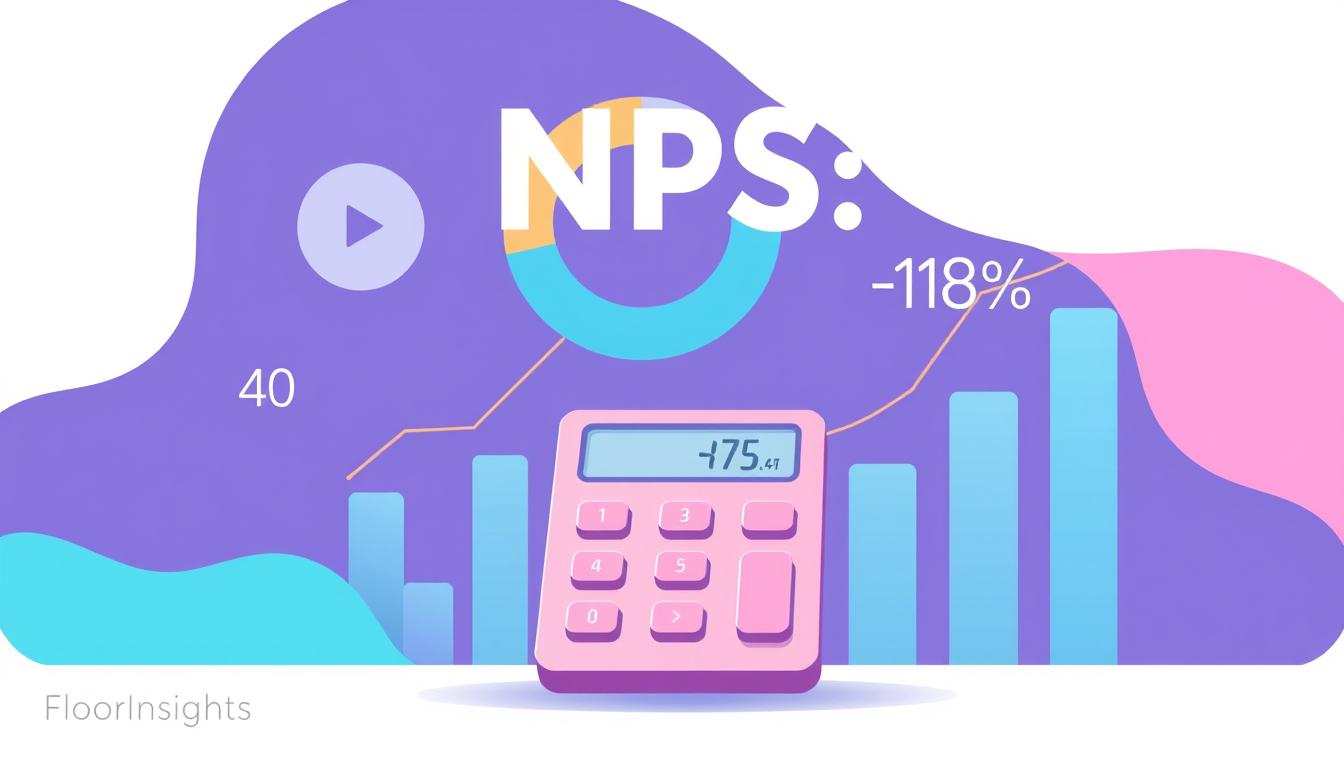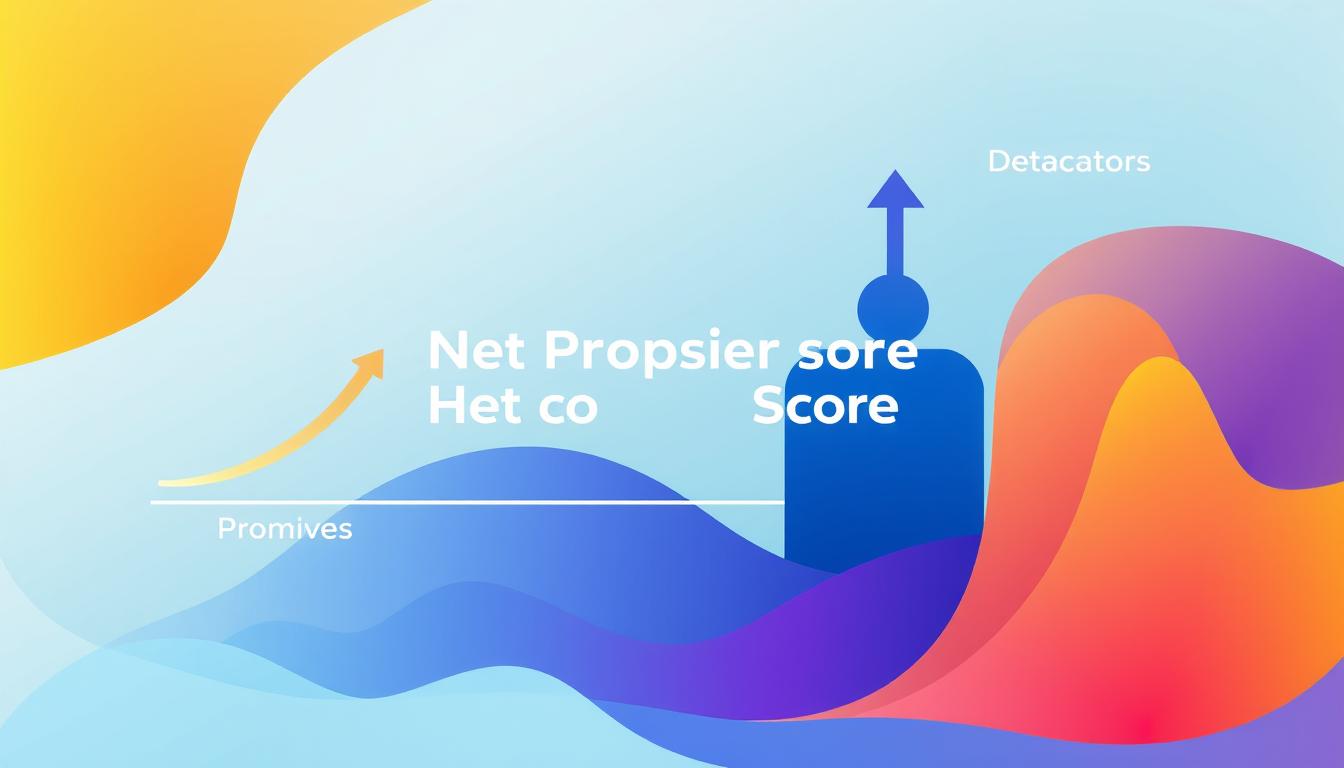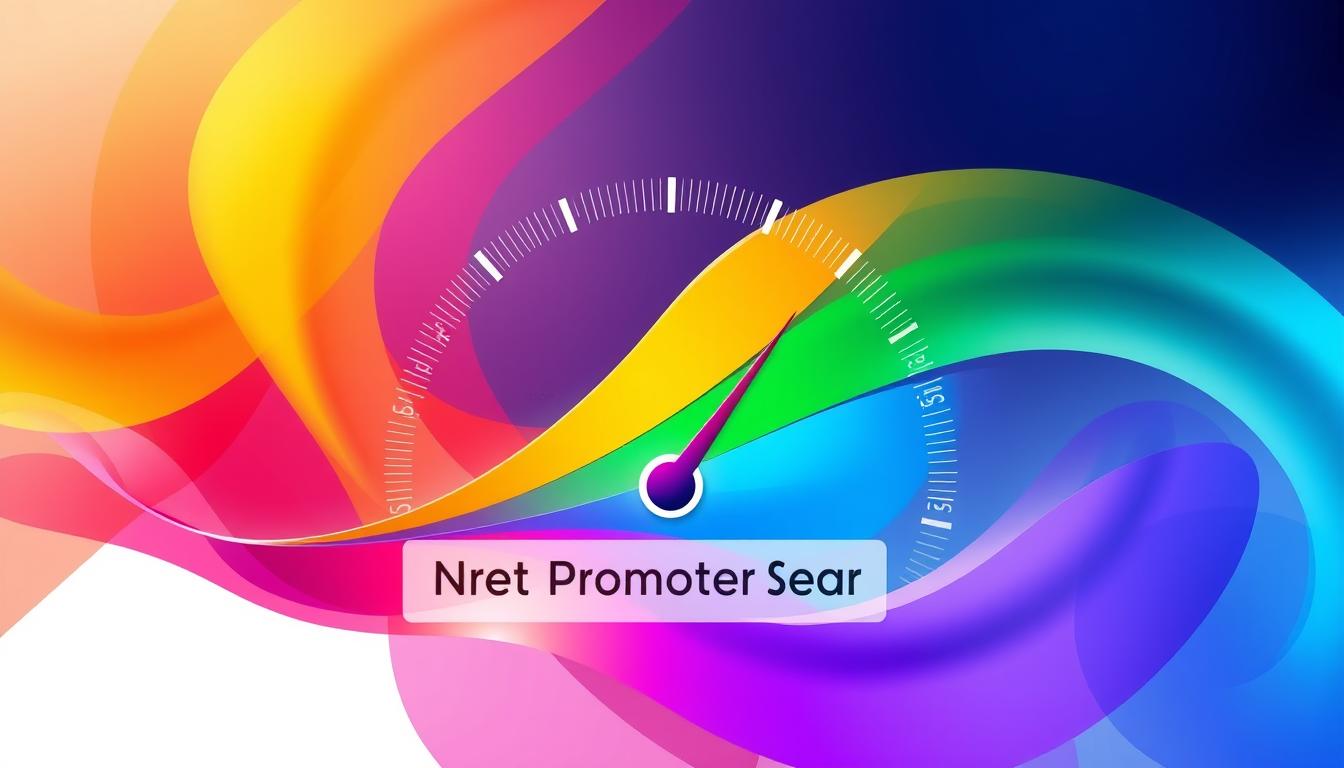In the dynamic landscape of education, we recognize the pivotal role of measuring and understanding student and parent satisfaction. The Net Promoter Score (NPS) methodology has emerged as a powerful tool for driving continuous improvement and fostering a customer-centric culture within educational institutions. By adapting this proven approach, we can empower schools, colleges, and universities to gain valuable insights and enhance the overall educational experience.
Key Takeaways
- Understand the significance of measuring student and parent satisfaction in the education sector.
- Explore how the Net Promoter Score (NPS) can be leveraged to capture invaluable insights.
- Learn how to adapt the NPS methodology to the unique needs of the education industry.
- Discover strategies for enhancing the student experience and fostering parent engagement.
- Gain insights into building a customer-centric culture by empowering educators with feedback.
Revolutionizing Feedback in Education: The Net Promoter Score Approach
In the ever-evolving landscape of education, the need for effective feedback mechanisms has become increasingly crucial. The Net Promoter Score (NPS) has emerged as a transformative tool that is revolutionizing the way educational institutions collect and respond to feedback from students and parents.
NPS is a simple yet powerful metric that measures customer loyalty and advocacy. By asking a single question – “How likely are you to recommend [institution] to a friend or colleague?” – educational institutions can gain valuable insights into their students’ and parents’ perceptions and experiences.
Unlike traditional survey methods that can be cumbersome and time-consuming, the NPS approach offers a streamlined and efficient way to gather real-time feedback. This data-driven approach empowers educational leaders to make informed decisions, address pain points, and enhance the overall student and parent experience.
“The Net Promoter Score has become a game-changer in the education sector, enabling institutions to build stronger relationships with their communities and drive continuous improvement.”
By implementing the NPS methodology, educational institutions can foster brand advocacy, customer retention, and customer engagement. This, in turn, leads to improved student outcomes, increased parent satisfaction, and a more customer-centric approach to education.
Embracing the Net Promoter Score in the education sector is a transformative step towards a future where feedback is not just collected, but actively used to shape the educational experience and drive positive change.
Understanding the Net Promoter Score
The Net Promoter Score (NPS) is a simple yet powerful customer loyalty metric that has gained widespread adoption across diverse industries. This straightforward approach measures the willingness of customers to recommend a company’s products or services to others, providing valuable insights into customer satisfaction and experience.
Simplifying Customer Loyalty Measurement
At the heart of the Net Promoter Score is a single question: “How likely are you to recommend [company/product/service] to a friend or colleague?” Respondents rate the company on a scale of 0 to 10, with 0 being “not at all likely” and 10 being “extremely likely.” Based on their responses, customers are categorized into three groups:
- Promoters (scores 9-10): Loyal, enthusiastic customers who are likely to actively promote the company.
- Passives (scores 7-8): Satisfied but unenthusiastic customers who are vulnerable to competitor offers.
- Detractors (scores 0-6): Unhappy customers who may actively discourage others from using the company’s products or services.
The Net Promoter Score is then calculated by subtracting the percentage of Detractors from the percentage of Promoters. This simple formula provides a clear and concise metric for tracking customer loyalty and identifying areas for improvement.
A Proven Methodology for Diverse Industries
The Net Promoter Score has proven to be an effective customer loyalty metric across a wide range of industries, including education. By focusing on the customer’s willingness to recommend, the NPS captures a holistic view of the customer experience, from initial engagement to ongoing satisfaction. This makes it a valuable tool for educational institutions seeking to enhance the experiences of students, parents, and other stakeholders.
The simplicity and versatility of the Net Promoter Score have contributed to its widespread adoption, making it a widely recognized and respected customer feedback mechanism. As the education sector continues to evolve, the NPS offers a reliable and actionable approach to measuring and improving customer loyalty, ultimately leading to enhanced student and parent satisfaction.
Adapting NPS for the Education Sector
As the education sector embraces the Net Promoter Score (NPS) methodology, it’s crucial to recognize the unique nuances that come with adapting this powerful tool. While the core principles of NPS remain the same, institutions must identify the key stakeholders, such as students and parents, and develop specific survey questions that capture their distinct perspectives and experiences.
By aligning the NPS approach with the specific goals and challenges of the education sector, institutions can unlock a wealth of invaluable insights. This tailored application allows for a deeper understanding of student and parent satisfaction, enabling institutions to drive meaningful change and enhance the overall educational experience.
Identifying Key Stakeholders
In the education sector, the primary stakeholders are students and parents. Institutions must carefully consider the unique needs and expectations of these groups when crafting their NPS surveys. This ensures that the feedback collected accurately reflects the sentiments of those who are directly impacted by the institution’s performance.
Developing Targeted Survey Questions
NPS surveys in the education sector should go beyond the standard “How likely are you to recommend our institution to a friend or colleague?” question. Institutions should incorporate questions that delve into specific aspects of the student and parent experience, such as:
- The quality of academic programs and support services
- The effectiveness of communication and engagement between the institution and families
- The overall satisfaction with the institution’s facilities and resources
- The perceived value and return on investment for the educational experience
By tailoring the NPS survey to the unique needs of the education sector, institutions can gather a more comprehensive understanding of their stakeholders’ perspectives, leading to more informed decision-making and targeted improvements.
| Stakeholder | Targeted NPS Survey Questions |
|---|---|
| Students |
- How satisfied are you with the quality of the academic programs?
- How likely are you to recommend our institution to a friend or family member?
- How well do the institution’s resources and support services meet your needs?
| Parents |
- How satisfied are you with the level of communication and engagement from the institution?
- How likely are you to enroll your child in our institution again?
- How would you rate the overall value of the educational experience provided by our institution?
By adapting the Net Promoter Score to the unique needs of the education sector, institutions can unlock a deeper understanding of student and parent satisfaction, driving continuous improvement and delivering an exceptional educational experience.
Enhancing Student Experience through NPS
By implementing the Net Promoter Score (NPS) framework, educational institutions can gain invaluable insights into the student experience. The NPS metric provides a clear and concise measure of student loyalty and advocacy, while the accompanying feedback enables institutions to identify areas for improvement and track the impact of their efforts over time.
Capturing Invaluable Insights
The NPS survey allows institutions to gather direct feedback from students, revealing their levels of satisfaction and willingness to recommend the institution to others. This data-driven approach empowers institutions to make informed decisions, address pain points, and continuously enhance the overall student experience.
Driving Continuous Improvement
The insights gleaned from NPS surveys empower educational institutions to take targeted actions and drive continuous improvement. By addressing identified areas of concern and implementing changes based on student feedback, institutions can foster an environment that consistently meets and exceeds student expectations, ultimately leading to higher student satisfaction and loyalty.
By leveraging the Net Promoter Score, institutions can unlock a powerful tool for enhancing the student experience. This data-driven approach not only provides a clear measure of student sentiment but also equips institutions with the insights needed to make informed decisions and drive meaningful change.
“The Net Promoter Score has been a game-changer for our institution. The insights we’ve gained have allowed us to make targeted improvements that have directly impacted student satisfaction and loyalty.”
| Metric | Description | Benefit |
|---|---|---|
| Net Promoter Score | A measure of customer loyalty and advocacy | Provides a clear benchmark for student satisfaction and the likelihood of recommendation |
| Student Feedback | Qualitative insights gathered through NPS surveys | Identifies specific areas for improvement and enables data-driven decision making |
| Continuous Improvement | The process of making ongoing enhancements based on student feedback | Fosters a culture of student-centricity and enhances the overall educational experience |
Fostering Parent Engagement with NPS
In the education sector, the Net Promoter Score (NPS) can be a powerful tool for fostering stronger relationships with parents, the key stakeholders and influential decision-makers. By incorporating NPS into their feedback mechanisms, educational institutions can better understand and address the concerns and expectations of parents, enhancing the overall customer experience.
The NPS approach not only improves parent satisfaction but also strengthens the institution’s reputation and brand loyalty. By actively soliciting feedback from parents, schools and universities can gain valuable insights into the parent experience, identify areas for improvement, and demonstrate a genuine commitment to addressing their needs.
Moreover, the NPS data can be leveraged to create targeted engagement strategies, such as personalized communications, tailored programs, and responsive support services. This level of parent engagement helps to build trust, foster loyalty, and ultimately contribute to the institution’s long-term success.
By embracing the NPS methodology, educational institutions can transform the way they interact with parents, positioning themselves as customer-centric organizations that prioritize the needs and preferences of this critical stakeholder group.
| Key Benefits of Implementing NPS in Education | Metrics |
|---|
- Improved parent satisfaction and engagement
- Enhanced institutional reputation and brand loyalty
- Valuable insights into the parent experience
- Targeted engagement strategies and responsive support
- Net Promoter Score
- Parent satisfaction rate
- Parent engagement metrics (e.g., participation in surveys, events, and initiatives)
- Retention and referral rates

“By leveraging the Net Promoter Score, we have been able to gain a deeper understanding of our parents’ needs and preferences, allowing us to tailor our services and communications to better meet their expectations.”
Building a Customer-Centric Culture
Implementing the Net Promoter Score (NPS) within the education sector can serve as a catalyst for cultivating a customer-centric culture. By regularly collecting and acting on feedback from students and parents, institutions can empower their educators to better understand and address the needs of their key stakeholders. This feedback-driven approach promotes a culture of continuous improvement, where the voices of students and parents are valued and translated into meaningful change.
Empowering Educators with Feedback
The Net Promoter Score provides educators with valuable insights into the experiences and perceptions of their students and parents. By actively soliciting and analyzing this feedback, teachers can gain a deeper understanding of their customers’ needs, expectations, and pain points. Armed with this knowledge, educators can make informed decisions to enhance the student experience and address areas for improvement.
Empowering educators with NPS data empowers them to become true customer advocates, driving a customer-centric culture throughout the institution. When educators feel empowered to act on feedback and make positive changes, it fosters a sense of ownership and accountability, ultimately leading to increased student and parent satisfaction.
| Key Benefits of Empowering Educators with NPS Feedback |
|---|
- Deeper understanding of customer (student and parent) needs and expectations
- Ability to make informed decisions to enhance the student experience
- Increased sense of ownership and accountability among educators
- Fostering a customer-centric culture throughout the institution
- Driving continuous improvement based on customer feedback
By embracing the Net Promoter Score as a tool for empowering educators, educational institutions can cultivate a truly customer-centric culture, where the voices of students and parents are heard, valued, and acted upon. This transformation can lead to increased student and parent satisfaction, as well as improved educational outcomes for all.
Best Practices for Implementing NPS Surveys
Successful implementation of the Net Promoter Score (NPS) in the education sector requires a thoughtful approach to survey design and participant engagement. By following best practices, educational institutions can maximize the impact of their NPS initiatives and gain accurate, actionable insights from student and parent feedback.
Designing Effective Questionnaires
When crafting NPS surveys, it’s crucial to create concise, easy-to-understand questions that capture the unique perspectives of your students and parents. Avoid using complex language or jargon, and focus on gathering feedback that is directly relevant to the student experience and parental satisfaction. Additionally, consider incorporating open-ended questions to gather more detailed, qualitative insights.
Encouraging Participation
High survey participation rates are essential for obtaining reliable NPS data. To encourage students and parents to complete the NPS survey, consider implementing strategic communication tactics, such as clear and compelling email invitations, social media outreach, and in-person promotional efforts. Additionally, offering incentives, such as gift cards or raffle prizes, can help boost engagement and response rates.
By designing effective NPS questionnaires and implementing targeted strategies to drive survey participation, educational institutions can unlock the power of the Net Promoter Score to gain invaluable insights and drive continuous improvement in the student and parent experience.
“The Net Promoter Score is a powerful tool for educational institutions to understand and improve the student and parent experience. By following best practices, schools and universities can harness the power of NPS to drive meaningful change and enhance their overall educational offering.
Analyzing and Acting on NPS Data
At the heart of the Net Promoter Score (NPS) lies a treasure trove of insightful data that can transform educational institutions. By carefully analyzing NPS trends, categorizing student and parent feedback, and identifying underlying root causes, we can uncover a wealth of opportunities for improvement and drive continuous enhancement of the overall experience.
A data-driven approach empowers us to make informed decisions, track progress, and optimize our strategies. Through a deep dive into NPS data, we can gain a nuanced understanding of what’s working well, where challenges lie, and how to better meet the evolving needs of our stakeholders.
- Examine NPS Trends: Closely monitor fluctuations in your NPS over time to identify patterns, detect emerging issues, and recognize areas of strength.
- Categorize Feedback: Organize feedback from detractors, passives, and promoters into meaningful categories to pinpoint specific areas for improvement.
- Identify Root Causes: Analyze the underlying reasons behind low scores or negative comments to address the core issues and not just the symptoms.
By leveraging the power of data analysis and data-driven decision making, we can transform NPS data into actionable insights that drive continuous improvement and elevate the student and parent experience to new heights.
“The true power of the Net Promoter Score lies in how institutions analyze and act upon the collected data.”
As we embark on this data-driven journey, we must remain steadfast in our commitment to understanding and addressing the needs of our students and parents. By harnessing the insights gleaned from NPS, we can strengthen our customer-centric culture, empower our educators, and ultimately, cultivate a thriving educational ecosystem that inspires excellence.
Net Promoter Score: A Catalyst for Educational Excellence
When implemented effectively, the Net Promoter Score (NPS) can serve as a powerful catalyst for educational excellence. By fostering a customer-centric culture, empowering educators, and continuously improving the student and parent experience, institutions can elevate their reputation, increase customer loyalty, and ultimately contribute to the overall success and growth of the education sector.
At the heart of this transformation lies the ability to capture invaluable insights through NPS surveys. By understanding the customer satisfaction levels and identifying areas for improvement, education providers can make informed decisions that cater to the unique needs of their students and parents.
NPS has been a game-changer for our institution. It has enabled us to truly understand our customers’ perspectives and drive continuous improvements that have positively impacted our educational excellence.”
The adoption of NPS in the education sector has paved the way for a more customer-centric approach. Educators are now empowered with real-time feedback, allowing them to adapt their teaching methods, enhance learning environments, and create more engaging experiences for students.
Moreover, the integration of NPS has fostered stronger parent engagement, as institutions actively seek feedback and collaborate with families to address their concerns and expectations. This collaborative approach has not only improved customer satisfaction but has also strengthened the overall customer loyalty within the education community.
As educational institutions continue to embrace the power of NPS, they are well-positioned to achieve educational excellence and maintain a competitive edge in the industry. By cultivating a culture of continuous improvement, driven by customer feedback, these institutions can pave the way for a future where academic success is not just a goal, but a reality.
Conclusion
The Net Promoter Score has the potential to revolutionize the education sector by providing a comprehensive, data-driven approach to measuring and enhancing student and parent satisfaction. By adapting this proven methodology to the unique needs of educational institutions, we can unlock valuable insights, foster a customer-centric culture, and drive continuous improvement.
Through the implementation of NPS, educational leaders can gain a deeper understanding of their stakeholders’ experiences, identify areas for improvement, and make informed decisions to enhance the overall student and parent experience. This, in turn, will position their institutions for long-term success and educational excellence, solidifying their commitment to delivering the highest quality of service to their community.
As we continue to navigate the evolving landscape of the education sector, the Net Promoter Score will serve as a catalyst for driving positive change, fostering stronger relationships with students and parents, and ultimately, ensuring the continued growth and success of our educational institutions.
FAQ
What is the Net Promoter Score (NPS) and how can it benefit the education sector?
The Net Promoter Score (NPS) is a customer loyalty metric that measures the willingness of customers to recommend a company’s products or services to others. In the education sector, the NPS can be a powerful tool for measuring and understanding student and parent satisfaction, enabling institutions to drive continuous improvement and foster a customer-centric culture.
How can the Net Promoter Score be adapted for the education sector?
While the core principles of the Net Promoter Score remain the same, adapting it for the education sector requires a tailored approach. Institutions must identify the key stakeholders, such as students and parents, and develop specific NPS survey questions that capture their unique perspectives and experiences. By aligning the NPS methodology with the specific goals and challenges of the education sector, institutions can unlock powerful insights and drive meaningful change.
How can the Net Promoter Score enhance the student experience?
By implementing NPS surveys, educational institutions can gain invaluable insights into the student experience. The NPS metric provides a clear and concise measure of student loyalty and advocacy, while the accompanying feedback enables institutions to identify areas for improvement and track the impact of their efforts over time. This data-driven approach empowers institutions to make informed decisions, address pain points, and continuously enhance the overall student experience.
How can the Net Promoter Score foster parent engagement and satisfaction?
In the education sector, parents play a crucial role as key stakeholders and influential decision-makers. By incorporating the Net Promoter Score into their feedback mechanisms, institutions can better understand and address the concerns and expectations of parents, fostering stronger relationships and enhancing the overall customer experience. This approach not only improves parent satisfaction but also strengthens the institution’s reputation and brand loyalty.
How can the Net Promoter Score help build a customer-centric culture in the education sector?
Implementing the Net Promoter Score within the education sector can serve as a catalyst for cultivating a customer-centric culture. By regularly collecting and acting on feedback from students and parents, institutions can empower their educators to better understand and address the needs of their key stakeholders. This feedback-driven approach promotes a culture of continuous improvement, where the voices of students and parents are valued and translated into meaningful change.
What are the best practices for implementing NPS surveys in the education sector?
Successful implementation of the Net Promoter Score in the education sector requires a thoughtful approach to survey design and participant engagement. Institutions must craft effective questionnaires that capture the unique perspectives of students and parents, while also ensuring a high response rate through strategic communication and incentives. By following best practices, educational institutions can maximize the impact of their NPS initiatives and gain accurate, actionable insights.
How can institutions effectively analyze and act on NPS data in the education sector?
The true power of the Net Promoter Score lies in how institutions analyze and act upon the collected data. By closely examining the NPS trends, categorizing feedback, and identifying root causes, educational institutions can uncover opportunities for improvement and implement targeted initiatives to enhance the overall student and parent experience. This data-driven approach empowers institutions to make informed decisions, track progress, and drive continuous improvement.
Related Posts
- How Tech Startups Can Leverage NPS for Rapid Growth – NPS in the Technology Industry
- How to Choose the Right NPS Software for Your Business
- NPS and the Role of Customer Support in Telecoms – NPS in Telecommunications
- How SMBs Can Use NPS to Improve Their Online Reputation – NPS for Small and Medium Businesses (SMBs)






